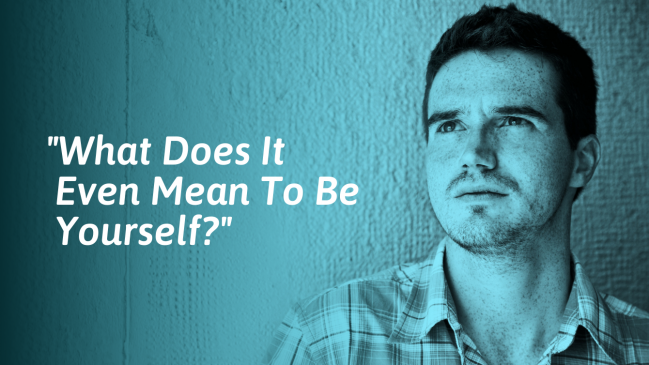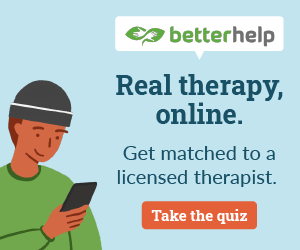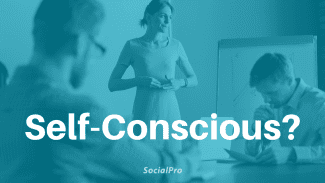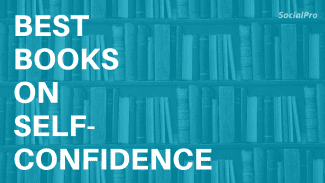Being yourself involves both knowing and showing who you are. The first step to being yourself is to learn more about yourself and get more in touch with your feelings, beliefs, and needs. The next step is to learn how to express these in both your words and your actions. The final step is to learn how to stay true to yourself without letting other people, society, or even your inner critic bully you into changing.[1, 2]
In this article, you will learn how to know and show your true self to others and how to get and stay connected with the real you.
Sections
Are you being yourself?
According to one researcher, being true to yourself involves three steps: developing self-awareness, living authentically, and guarding against external influence. You can use these questions as a guide to know whether you are being yourself at work, at school, or with others:[1]
- Do you feel like you truly know and understand yourself?
- Do most of your actions reflect your true thoughts, feelings, and values?
- Can you resist the urge to change yourself in order to fit in or be liked by others?
If you answered a strong ‘yes’ to all three of these questions, then you are probably being true to yourself. If you answered ‘no’ or ‘it depends,’ then you probably aren’t being 100% real, open and honest with people.
How to be yourself
You need to know yourself in order to show yourself, but showing your true self (by being open, real, and honest) also helps you know yourself. The following steps will help you address both issues, helping you become more self-aware while also encouraging you to act in ways that demonstrate your feelings, beliefs, and values.
Because low self-esteem, anxiety, and shame are common issues that get in the way of being yourself, these steps will also provide tips on how to cope with these in a healthier way.
1. Reflect on your history
Throughout your life, you have been shaped by your experiences. Part of getting to know yourself better means brushing up on your history and exploring the experiences and decisions that have shaped you the most.
You can get started by journaling and reflecting on these questions:
- What were some key turning points in my life, and how did they change me?
- What were the themes in my happiest memories (i.e., connection, success, etc.)?
- In times when I felt like I wasn’t true to myself, what traits, values, or beliefs did I betray (i.e., honesty, loyalty, etc.)?
Reflecting on significant events in your life can help you unravel the mystery of who you are, providing clues about the traits and qualities that are core to who you are.[1] This is a great way to get in touch with your core values and beliefs.
2. Spend quality time with yourself
Your relationship with yourself is the single most important relationship in your life. Just like all relationships, you need to invest attention and time into yourself. Make time on a regular basis to spend time alone, and make sure this is quality time that is meaningful and enjoyable.
Here are some ideas about how to spend quality time with yourself:
- Start a journaling practice to reflect on your thoughts and feelings
- Use creative outlets to express yourself (i.e., music, crafting, DIY projects, etc.)
- Find self-care activities that help you release stress (i.e., exercise, meditation, etc.)
- Schedule weekly activities that you enjoy and look forward to
3. Decode your emotions
Think of feelings like they are your internal messaging system, always trying to communicate with you. Even difficult emotions like sadness or fear have important messages, but you can miss these when you ignore them or distract yourself from them.
To get the important messages your emotions have for you, try using these steps:
- Notice and name what you are feeling
Example: Feeling anxious before work
- Identify what the feeling is in response to
Example: A meeting where you may be asked to speak
- Consider what the feeling is trying to tell you
Example: That you worry you will say the wrong thing
- Identify what you want, need, or care about in this situation
Example: That you want to be liked and respected at work
Research indicates that being in touch with your inner thoughts and feelings is an important part of being authentic.[1] The more you are in touch with your emotions, the less you will need to look outside of yourself for answers about who you are or what you think or feel.
4. Stop listening and talking to your critic
While your inner critic will probably always have an opinion about things, it doesn’t mean you always have to ask for it, listen to it, or follow its advice. In fact, people who are kinder and less self-critical report feeling more authentic in their interactions and also report feeling happier.[5, 6]
Spending a lot of time listening (and talking back) to your inner critic can be exhausting and toxic. With your critic judging and analyzing your every word or action, it’s much harder to be yourself. Work on giving your critic less of your time, energy, and attention by shifting your focus to your body, breath or by using your 5 senses to become more present.
5. Speak more freely
Another way to be yourself is to speak more freely. Often, your critic causes you to overthink everything you say, especially when you feel nervous or insecure. When you overthink and filter every word, you might find that your mind goes blank or that your conversations feel forced and awkward.
Instead of thinking, editing, and rehearsing everything you say, practice just saying whatever is on your mind. Start with friends, family, and people you feel comfortable with, and slowly start to use this practice at work, at school, and with people you just met. This is a proven way to overcome anxiety and interact in ways that feel more natural.[4, 7]
6. Make up your own mind
Another way to be more of your true self is to make your own decisions. Instead of consulting with other people or polling your friends and family each time you make a purchase or a small decision, avoid seeking outside opinions. Instead, work on becoming more decisive by not asking for the opinions or advice of others.
Making decisions on your own is a great way to begin building more trust with yourself and becoming clearer about what you want and need, instead of relying on others to tell you. Because trusting yourself is an essential step to being true to yourself, making decisions on your own is an important step to being yourself.[1]
7. Disconnect from social media
Being authentic is much harder to do on social media, where many people fall into the trap of presenting a false version of themselves. On social media, people struggling with low self-esteem or authenticity are more likely to fall into this trap.[8] Even though it was designed to connect people, social media can make people feel more isolated and alone.
Being on social media can also lead you to make comparisons between yourself and others in ways that make you feel less than. This only adds more pressure to be better or different than you are and gives your inner critic more talking points. Limiting your social media use can make it easier to express yourself in ways that feel more real and honest.
8. Don’t shapeshift to fit in
If you don’t know how to be yourself around others, it might be because you aren’t really being yourself and instead are trying to be more like the people you are with. People who feel insecure about fitting in sometimes become social shapeshifters, changing their interests, opinions, and behavior to mimic people around them.[7]
Pretending to be someone you are not will never lead to relationships that are real and authentic and will also come at the cost of being true to yourself. Spend less effort and energy watching what other people are doing and trying to mimic them. Instead, work on being more open about who you are, honest about what you like, and real about what you feel and believe.
9. Find like-minded people
Finding a group of like-minded people can make it easier to be yourself and can reduce some of the pressure you feel to pretend, act, or change yourself to fit in. People tend to feel more comfortable and relaxed around people they have things in common with and are also more likely to develop friendships with them.[9]
You can find people with similar beliefs and interests by joining a group, meetup, or even volunteering for a cause you believe in. You could also search for like-minded people using friend apps that help to match you with people who have similar interests and hobbies. When you spend more time around people you have a lot in common with, you will automatically find it easier to be yourself.
10. Protect your agenda
When you don’t have your own agenda, or when you do but don’t protect it, you can easily fall into the agenda other people have for you.
For example, if you spend all of your time helping other people with their assignments, you might not have enough time to do your own work, or your quality of work might suffer. If you feel like people treat you like a doormat, this might be happening in your personal life, too.
Here are some simple ways to protect your agenda:
- Don’t respond ‘yes’ automatically when someone asks you for something
- Ask to get back to people when they ask you to take something on
- Consult your own schedule and see what you already have on your plate
- Consider the pros and cons of taking on any new project or task
- Prioritize self-care and make regular time for activities you enjoy
11. Face your fear of rejection head-on
Most people want to avoid rejection, but becoming too focused on the risk of rejection can paralyze you. The fear of rejection keeps you focused on what other people want and need from you, making it almost impossible to stay true to yourself. Being willing to accept the possibility of being rejected allows you to speak and act freely, instead of constantly censoring yourself.
You can face your fear of rejection head-on by:
- Not scanning people’s faces for rejection cues as you speak
- Not feeling the need to copy or mimic what other people are saying/doing
- Saying what you think or believe, even when you aren’t sure others agree with you
- Being looser and less uptight around people, even those you don’t know well
- Letting more of your quirks, sense of humor, or personality show
12. Gut-check your behavior
Another way to make sure you are being yourself is to take time to do a gut check. Think back to recent instances where you felt like you were being really true to yourself, and also times when you weren’t. Acting in accordance with your values is a key step when learning how to be the best version of yourself.
Figure out common themes during times when you felt more or less authentic. This can help you identify your core values and beliefs, which are a central part of your true self.[1]
Here are some examples:
- Did you feel guilty after lying to a friend about being sick to get out of plans? If so, honesty or loyalty might be one of your core values.
- Did you feel good after standing up for a coworker who was accused of something they didn’t do? If so, you might have a strong belief in justice or integrity.
- Did you kick yourself after saying yes to a second date with someone who was really self-centered? If so, it might be because you want to trust yourself more or because humility is one of your values.
13. Detox from external validation
External validation is like a drug that many people rely on for self-worth, but like any drug, the ‘high’ is only temporary. Also, external validation can’t provide you with a lasting, stable sense of self-worth. Instead, it traps you into a cycle of needing to look outside of yourself and not knowing how to be ok without it.
When you don’t feel good about yourself, try going inside of yourself instead of turning to other people or social media for validation. Try to find a still, quiet, calm place underneath the swirling chaos of your emotions- a place where you feel ‘ok’. Using mindfulness and self-compassion exercises can help you learn how to find confidence without external validation.
14. Learn to validate yourself
True self-worth comes from inside of you and is there even when no one likes your posts, replies to your texts, or hires you for the job you applied for. The only lasting form of self-worth comes from self-compassion, which is the practice of being kind and gentle to yourself. Try the tips below to tap into self-compassion and access your inner source of self-worth.[6]
- Be kind to your inner critic: Imagine yourself approaching your critic during times when it’s toxic and encouraging it to ‘take the day off’. This is a kind, gentle way to disengage from your critic instead of becoming angry when it shows up.
- Use mindfulness: You can practice mindfulness by focusing on your breath, your 5 senses, or just trying to put your full attention to what you’re doing. Mindfulness is proven to boost self-compassion, making it easier to disengage from your critic.
- Write yourself a letter: Another way to boost self-compassion is to write yourself a letter, using the voice you would use with a friend or loved one. Reading it aloud to yourself after can also be a powerful way to boost self-compassion.
- Choose to focus on and celebrate your strengths. Create a list of your accomplishments and review it regularly.
15. Stop comparing yourself
One of the sneaky ways your inner critic can force your true self into hiding is through comparisons. Comparing yourself can cause you to feel like you are not good enough. Shame is the feeling of not being good enough and is one of the fastest ways to send your true self into hiding.
Here are some of the toxic comparisons that may be disconnecting you from yourself:
- Comparing your body, weight, or appearance (e.g., to celebrities, pictures of your friends on Instagram)
- Where you thought you’d be in life at this point versus where you actually are (e.g., whether you’re married, have kids, etc.)
- Comparing your current self to your past self (e.g., how you’ve aged or changes in your health)
Why is it hard to be yourself?
Most of the time, anxiety, low self-esteem, or shame get in the way of being yourself.[3, 4] You might have noticed that it’s harder to be yourself around people you don’t know as well. This is because anxiety, insecurities, and a fear of being rejected are higher when you first meet someone. This can lead you to adopt certain defenses (what psychologists call ‘safety behaviors’) to lessen this risk.[4]
Safety behaviors are ways you might change your behavior to avoid calling attention to yourself or to get people to like you or think you’re cool. Unfortunately, instead of being shields that protect you from being hurt, these defenses can become walls that keep people out and prevent them from seeing the real you.
Some common safety behaviors that can make you feel untrue to yourself include:[7]
- Rehearsing or overthinking everything you say
- Staying quiet or sitting in the back of the room
- Using your phone to avoid social interactions
- Not talking about yourself or opening up
- Being silent when you disagree or have a different opinion
- Being a people pleaser to get people to like you
- Relying on a persona to seem liked, cool or funny
- Avoiding saying or doing anything that would bring attention to you
When you overuse these safety behaviors, they can make you feel untrue to yourself. You can make an effort to stop using these behaviors by speaking more freely and not censoring or editing everything you say. You can also make an effort to speak up more, even when you don’t know people very well, instead of staying quiet or trying not to stand out.
Final thoughts
You might have thought that being yourself was all about your words and actions, but a lot of the work is internal. This is because you can only show who you are when you know who you are. Being more in touch with your inner thoughts, feelings, and beliefs is the only way to be more authentic with others. When you know who you are, the next step is to let these parts of you show in your words and actions and resist the urge to hide, put on a mask, or change yourself to fit in.
Common questions about how to be yourself
How do you just be yourself?
The easiest way to be yourself is to stop trying too hard to be a different person. Even laughing at jokes you don’t find funny or trying to be more outgoing can be small betrayals to yourself. Over time, these can cause you to lose touch with who you truly are.
How do I reveal my true self?
The first step to revealing your true self is to work on knowing yourself better and getting in touch with your own feelings, beliefs, and values. The next step is to let go of old safety behaviors you’ve used to fit in.
What does it really mean to be yourself?
Being yourself means knowing and showing your true thoughts and feelings and also staying true to your core values and beliefs. When your behavior is consistent with your inner feelings and beliefs, you will feel more authentic.
How do I get back to being myself?
If you feel lost and want to get back to being yourself, the best way to begin is to get in touch with your inner thoughts and feelings. Paying more attention to how you feel, your gut reactions, and private thoughts is a great way to start this process.
What if I don’t like my true self?
It is easier to be yourself when you can love yourself and accept yourself, including all of your flaws and shortcomings. You can start this process by being less hard on yourself and by trying to talk to yourself in a kinder way.







I LOVE THIS ARTICLE!!! I’m still learning too understand my values and I feel like as a leader, this gets brought up often. Definitely going to be referencing this article in one of my future Toastmasters speeches too.